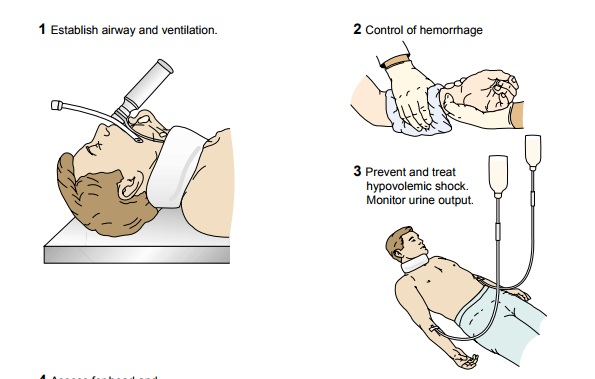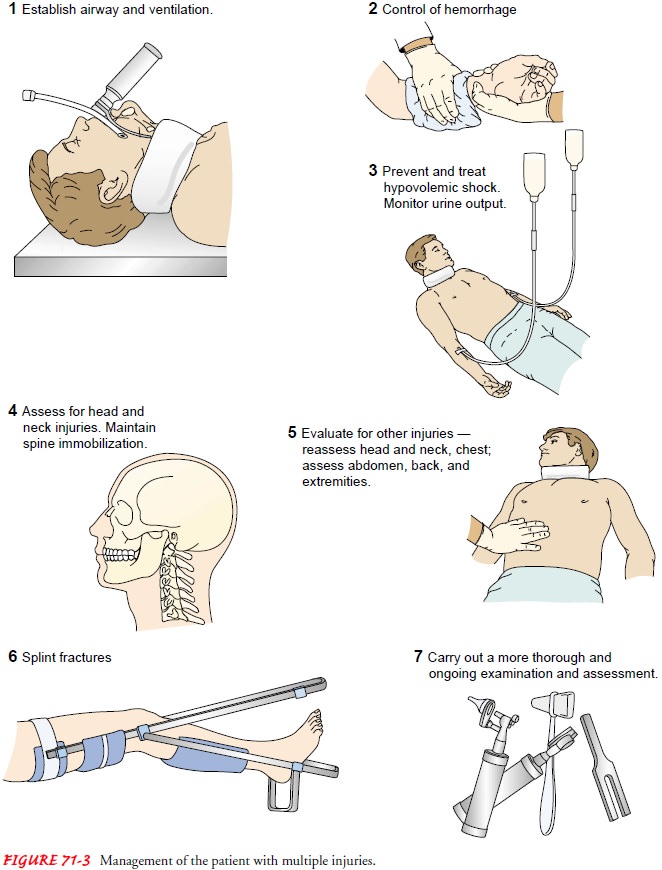Chapter: Medical Surgical Nursing: Emergency Nursing
Multiple Injuries - Emergency Nursing

MULTIPLE INJURIES
Care of the patient with
multiple injuries requires a team approach, with one person responsible for
coordinating the treatment. Im-mediately after injury, the body is
hypermetabolic, hypercoagu-lable, and severely stressed. Mortality in patients
with multiple injuries is related to the severity of the injuries and the
number of systems and organs involved.
Multiple trauma
potentially affects every body system. The nursing staff assumes responsibility
for assessing and monitoring the patient, ensuring intravenous access,
administering prescribed medications, collecting laboratory specimens, and
documenting activities and the patient’s response.
Assessment and Diagnostic Findings
Gross evidence of trauma may be slight or absent. The
injury re-garded as the least significant in appearance may be the most lethal.
For example, the pelvis fracture not identified until x-ray may be the injury
from which the patient is exsanguinating into the pelvic cavity. Another
example is a pneumothorax that is in-sidiously increasing in size, affecting
both the heart and lungs, while the staff are focused on the treatment of
external lacera-tions. An obvious amputation of the arm may have already
stopped bleeding from the body’s normal response of vasocon-striction, despite
being obvious and a devastating injury; mean-while, the patient may be dying
from an internal, not so visible, injury.
Management
The goals of treatment
are to determine the extent of injuries and to establish priorities of
treatment. Any injury interfering with a vital physiologic function (eg,
airway, breathing, circulation) is an immediate threat to life and has the
highest priority for immediate treatment. Essential life-saving procedures are
per-formed simultaneously by the emergency team. As soon as the patient is resuscitated, clothes are usually cut
off, and a rapid phys-ical assessment is performed. Transfer from field
management to the ED must be orderly and controlled, with attention given to
the verbal report from emergency medical services. Treatment in a level I
trauma center is appropriate for patients experiencing major trauma. Treatment
priorities are illustrated in Figure 71-3.

Related Topics